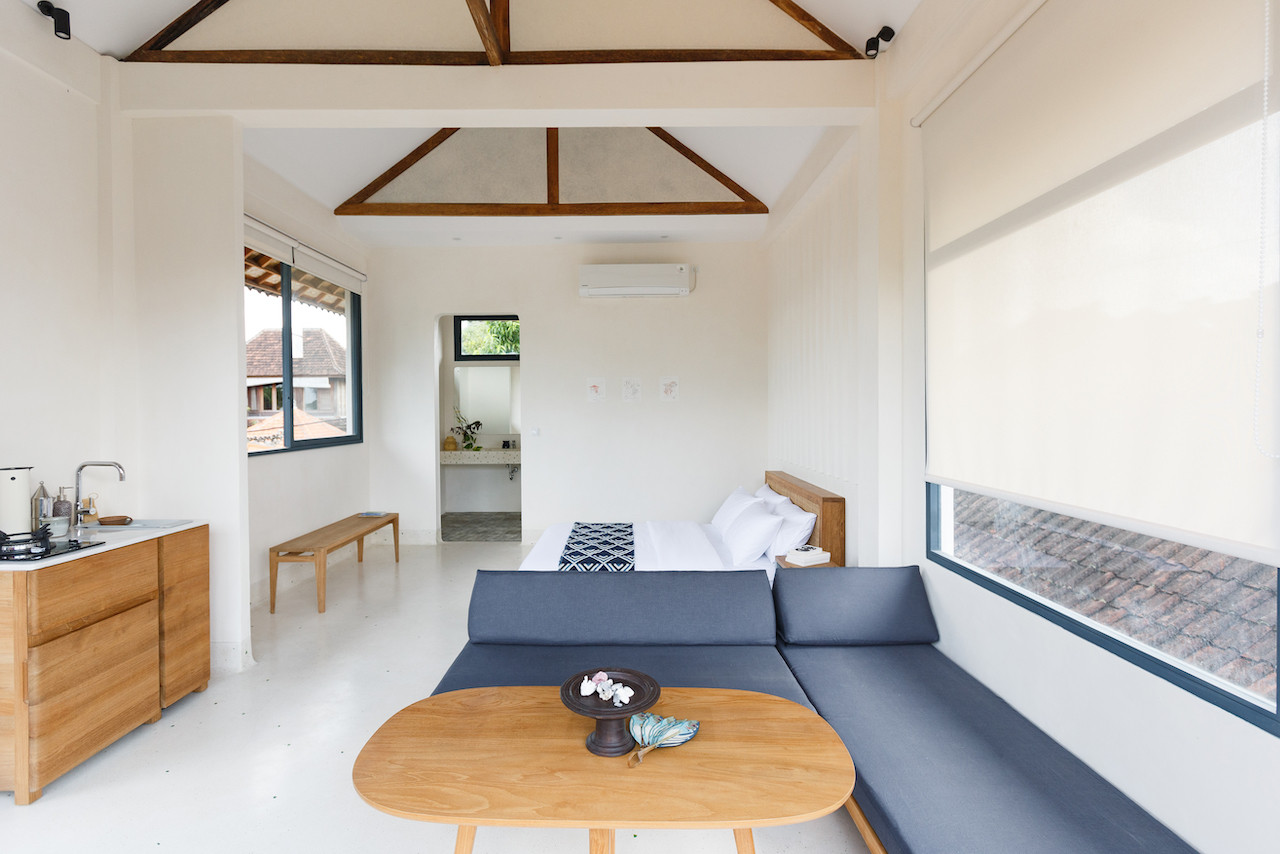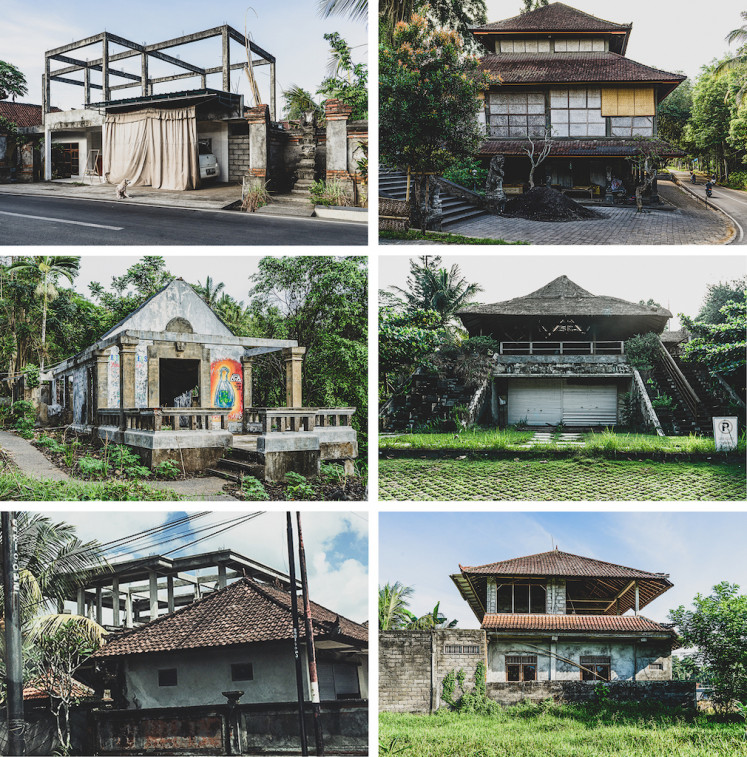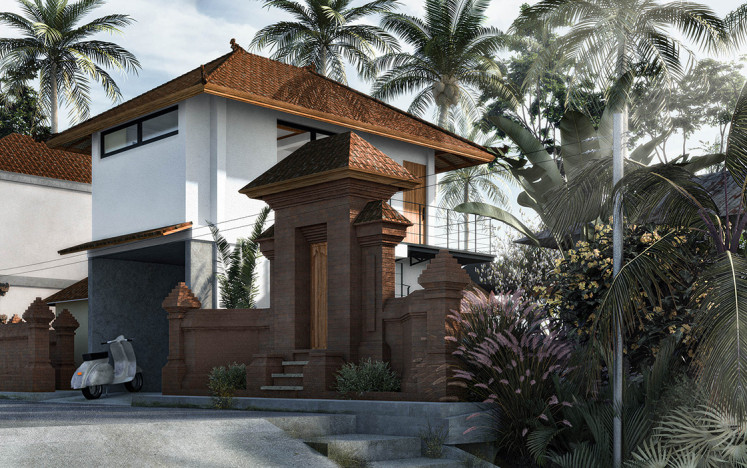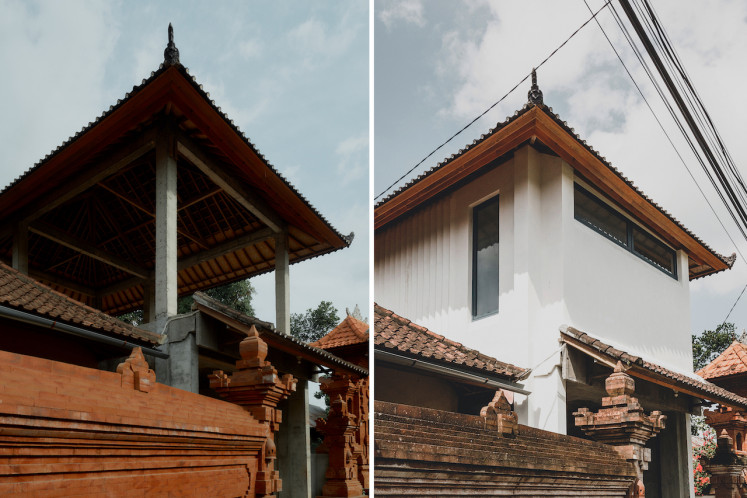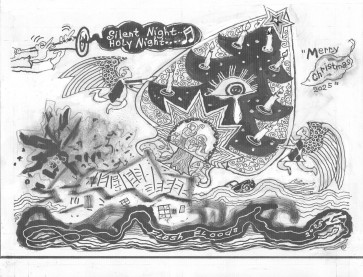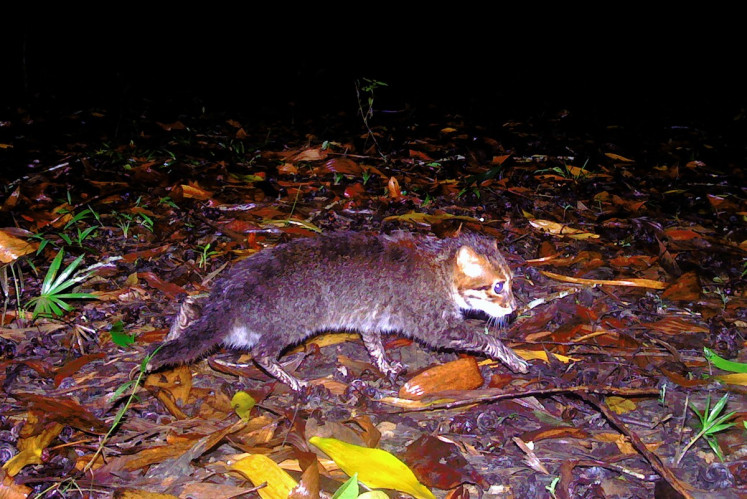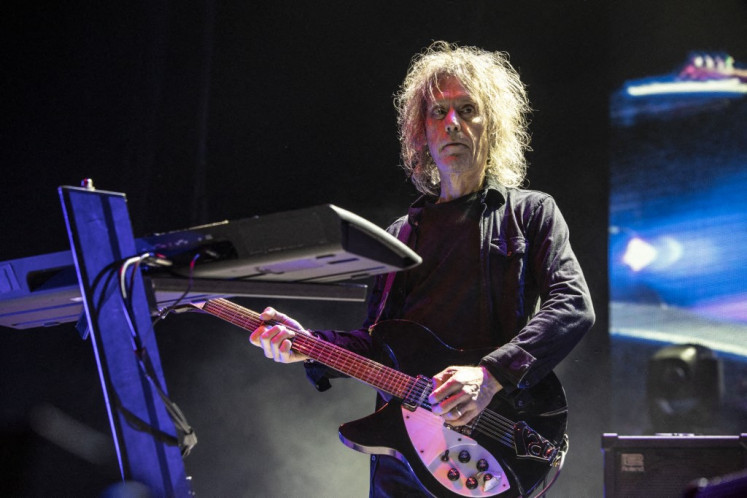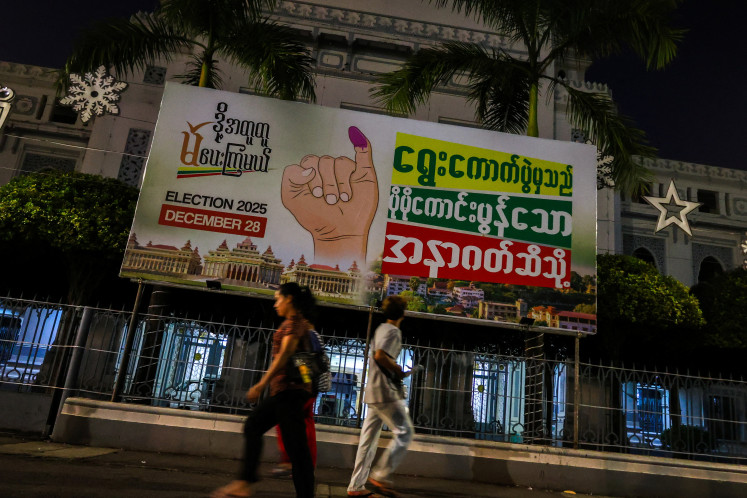Popular Reads
Top Results
Can't find what you're looking for?
View all search resultsPopular Reads
Top Results
Can't find what you're looking for?
View all search resultsPROJECT ETERE: breathing new life into Bali’s ghost buildings
Change text size
Gift Premium Articles
to Anyone
An artist creates art out of abandoned buildings.
The Balinese urban landscape has dramatically changed during the past two decades. Branching along corridors and spreading out from village clusters, the unchecked transformation of land without town planning consideration is culturally and aesthetically problematic. Two years into the pandemic, with the demise of mass tourism, the demand for new dwellings and tourist facilities occupying vital agricultural land continues to grow.
Modern development has generated a distinctly 21st-century phenomenon of Balinese, Indonesians and foreigners seeking sustainable investments and lifestyles. They have built properties and businesses to meet the growing demands of visitors and people relocating to the island. The onslaught, however, has led to an unsightly conundrum. Many buildings are constructed without contextual or sustainability consideration and are therefore abandoned, left incomplete or in disuse.
Thoughtfully-designed: Eastern elevation of Project Etere, including Canadian artist Terrence Gowers handrailing describing Bali tourism data. (Courtesy of Project Etere & Evelyn Pritt) (Project Etere/Courtesy of Project Etere & Evelyn Pritt)
Life cycles are a central aspect of Balinese culture, identified by the abundant beautiful details. Birth, growth and decay lead to regeneration. This process of deterioration is echoed upon the urban landscape. In development’s wake come scores of neglected building projects appearing as eyesores. Either due to insufficient funding, poor budget management or funds prioritizing other concerns, such as religious activities. With modernization comes increasing pressure upon the Balinese and the island’s natural resources.
Israeli architect Ran Ben-Shaya, visiting Bali for an internship in 2018, was fascinated by the ghost buildings littering the island. His meeting with Indonesian designer Eva Natasa birthed a fusion of unique ideas. The outcome is Project Etere (PE) which introduces a fresh and potentially far-reaching experimental model. It seeks to counterbalance and offer an alternative to some of the development woes that describe modern Bali. Launched in 2019, PE integrates real-estate development, architecture, design, contemporary art, economics and social impact. Its first prototype project is in Penestanan, Ubud.
Realizing the potential for collaboration, Ubud-based Italian artist Marco Cassani responded to the concepts raised by Natasa and Ben-Shaya. His mission is to create social sculptures in the form of exhibitions and performances, adopting art as an instrument to help socialize and reevaluate the territory, the Bali population and society in general. Cassani’s works are a part of his ongoing art and curatorial project Kayu – Lucie Fontaine, a decade long presentation of projects by Indonesian and international artists at Setia Darma House of Masks and Puppets in Mas, Ubud.
“PE has transformed an abandoned second-story structure, neglected for five years, within a traditional compound into a self-contained one-bedroom apartment featuring modern architecture and design components,” Marco Cassani told The Jakarta Post. “A unique external feature is by Canadian artist Terence Gower who designed the balcony, spiral staircase railing and gate as a graph based on data related to tourism in Bali from 1975 to 2025.”
Inspiration: Fascinated by the ghost buildings that litter Bali, architect Ran Ben-Shaya met with designer Eva Natasa and came up with Project Etere (PE), which introduces a fresh and potentially far-reaching experimental model. (Courtesy of Project Etere & Evelyn Pritt) (Project Etere/ Courtesy of Project Etere & Evelyn Pritt)PE’s Social Benefits
“PE has leased the site for ten years and paid the owner, Ni Wayan Sarmini, in advance, providing immediate economic benefit," Cassani stated. "The process involved interaction with Sarmini, sensitivity to surrounding traditional architecture and regulations, with the need to preserve Balinese culture."
"I am grateful and pleased to participate in this special project. I like the modern features and now own a unique property to offer the rental market," Sarmini told the Post. "Along with the training I receive in micro-business operations, I have extra work and financial benefits by providing a cleaning and laundry service and will soon offer breakfast to the tenants."
PE has hired Rana, training her in rental property management, to sustain the economic model. The apartment has been rented from mid-2021 until mid-April, providing a return on investment for the PE investor. After the lease expires, Rana will take over the full responsibility of the apartment.
Final look: Digital rendering of an external view of Project Etere. (Courtesy of Project Etere & Evelyn Pritt) (Project Etere/Courtesy of Project Etere & Evelyn Pritt)Jonathan Hagard, a French Indonesian animator and illustrator, tells stories based on his experiences in megacities such as Tokyo and Jakarta. In March, he will begin research in Bali.
From 20 April for one month, he will occupy the apartment and participates in the first artist-in-residency program, Contemporary Artisanal Studio Apartment. Hagard is creating Alternates, a film inspired by PE and the defining events of Dutch colonialism in Bali, to be completed at the end of 2022 and accessible within the apartment in a VR format. As a part of his residency, Hagard will exhibit a body of work in "DOMESTICITY IX" from April 17 to May 17 at Setia Darma, Mas.
Now and then: The before and after images of Protect Etere in Penestanan, Ubud. (Courtesy of Project Etere & Evelyn Pritt) (Project Etere/Courtesy of Project Etere & Evelyn Pritt)PE Expansion & Sustainability
“The expansion of PE involves the mapping of several abandoned buildings, intending to collaborate with the owners to transform and breathe new life into the structures,” said Cassani. “To achieve sustainability, the key responsibility is to maintain each micro-business.” While the pandemic slowed the progress of PE, Natasa and Ben-Shaya have introduced a proposal to another investor seeking to secure funding for the rent and development of the following PE site. “Hopefully PE number two will begin late in 2022,” Cassani told me.
A distinct aesthetic appeal describes the PE apartment. A fusion of elements creates a perfect living space and inspiration for creatives to flourish. Traditional architecture and minimal modern design elements and features introduce a vibrant, balanced atmosphere. Large windows allow superb views of the surrounding cultural environment while making the interior light and spacious. Sustainable solutions are vital during this unprecedented era of global disruption and socio-cultural change. Collaborative innovations from varying disciplines introduces an exciting alternative opportunity for the Bali urban landscape.

